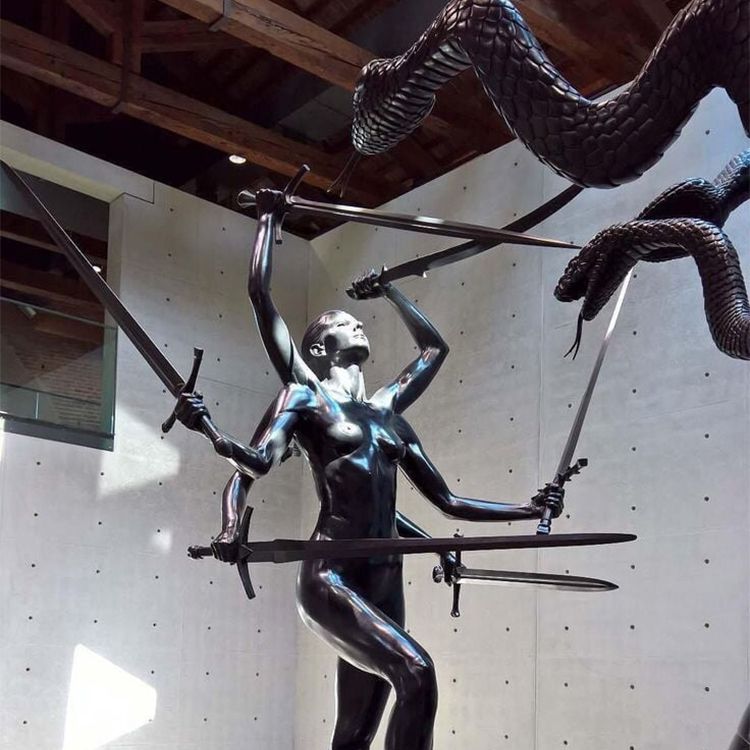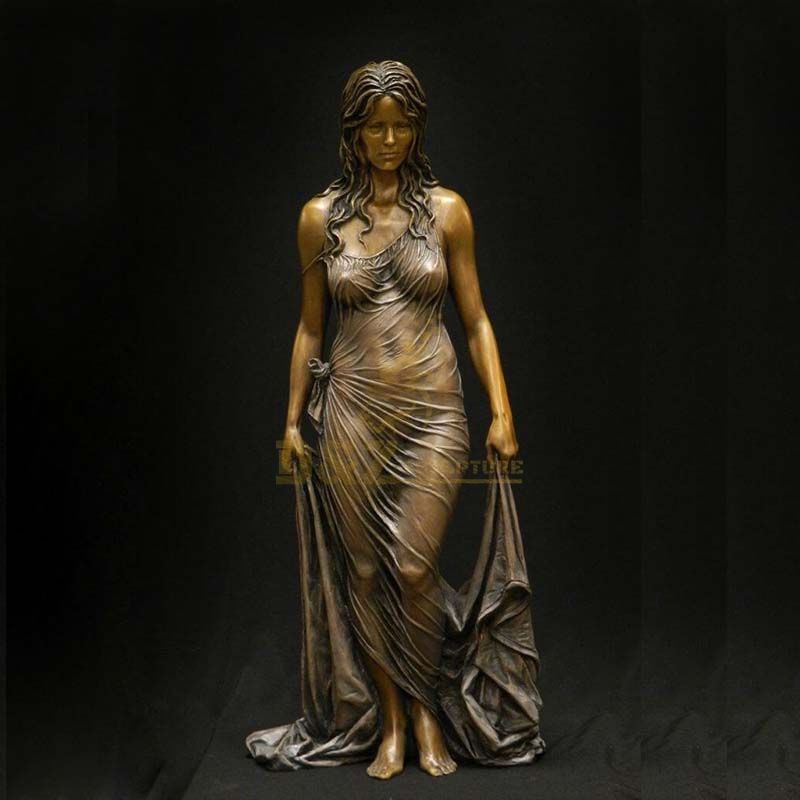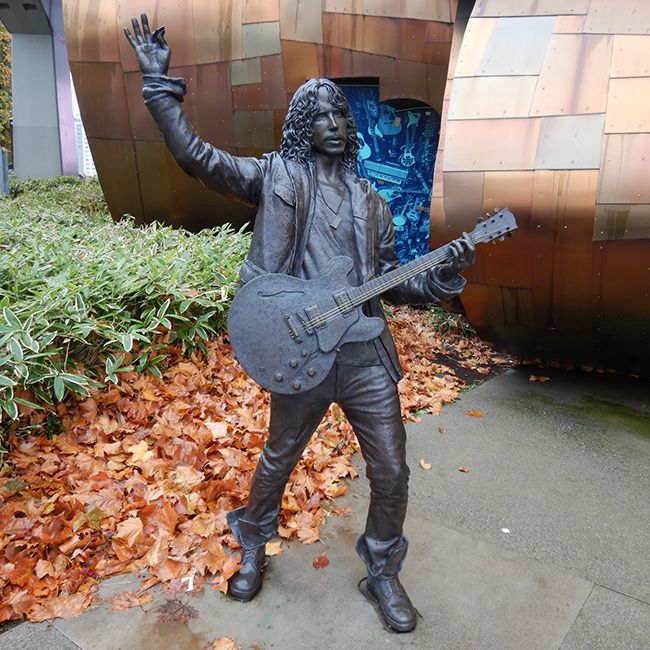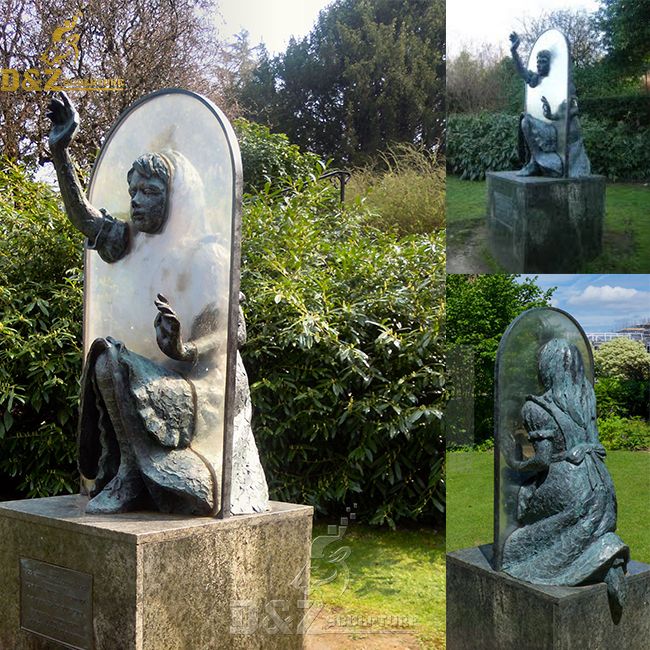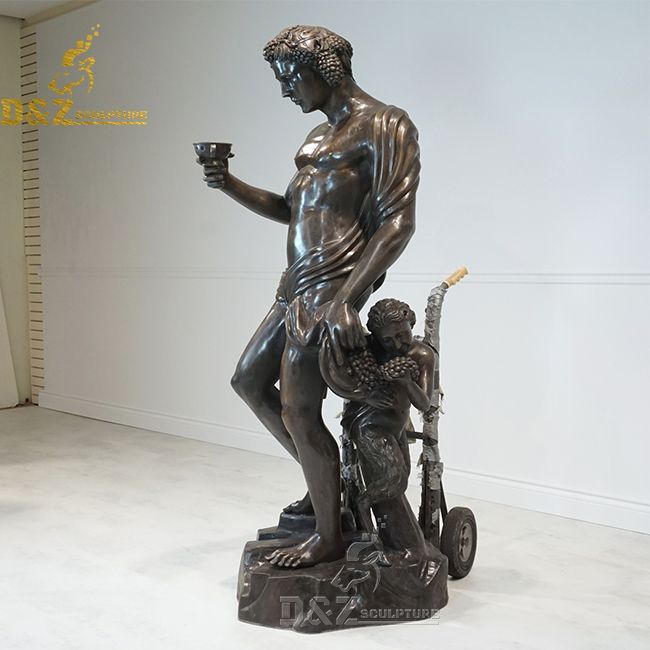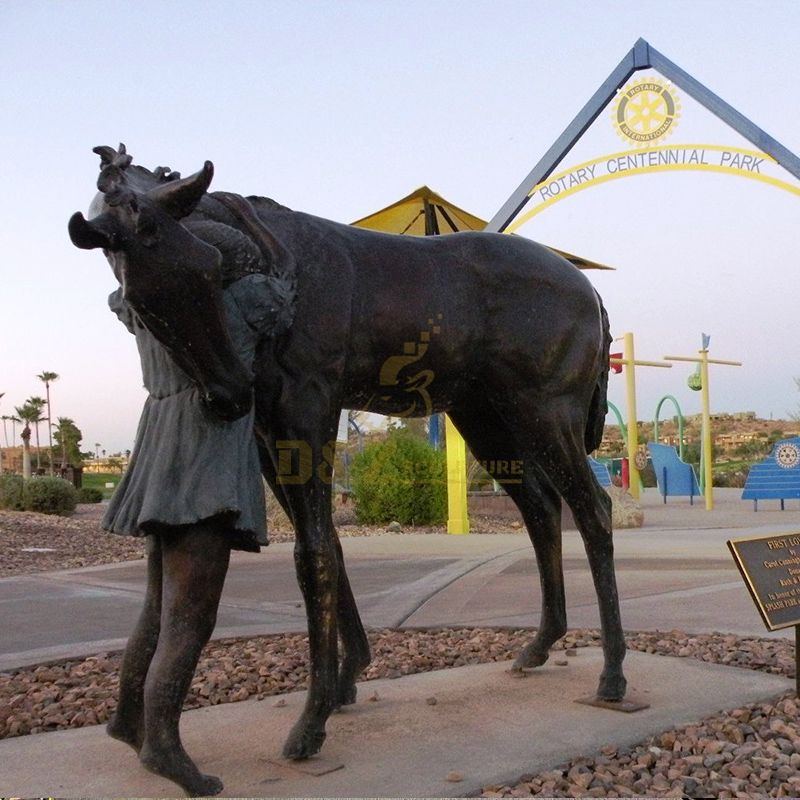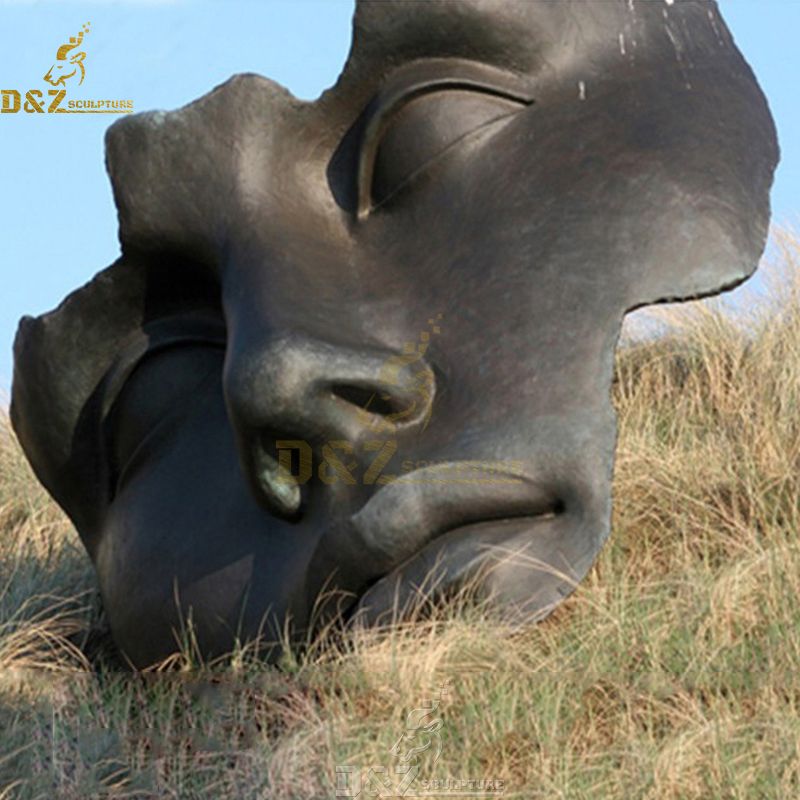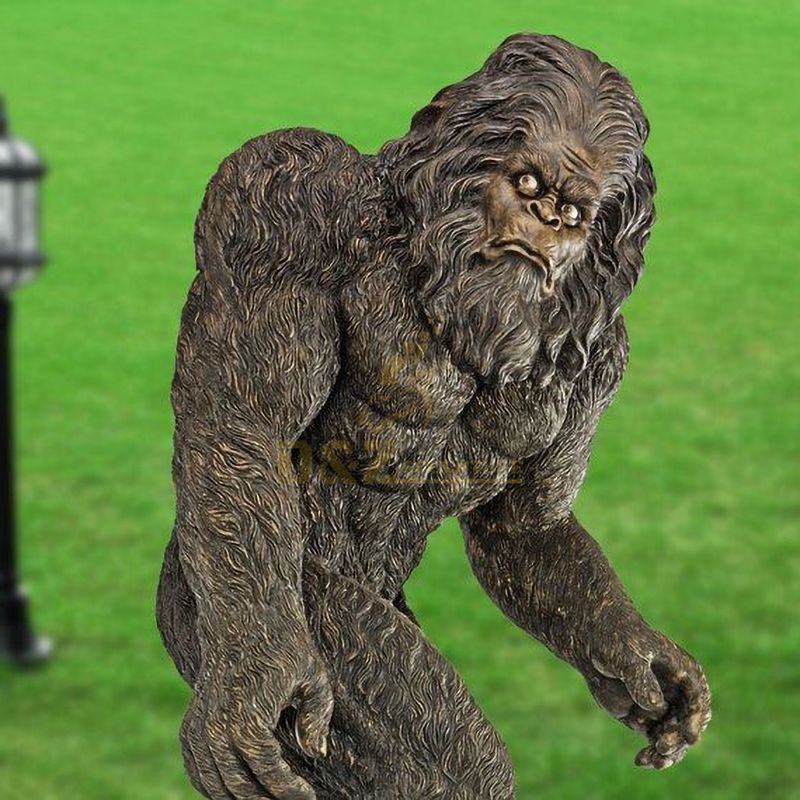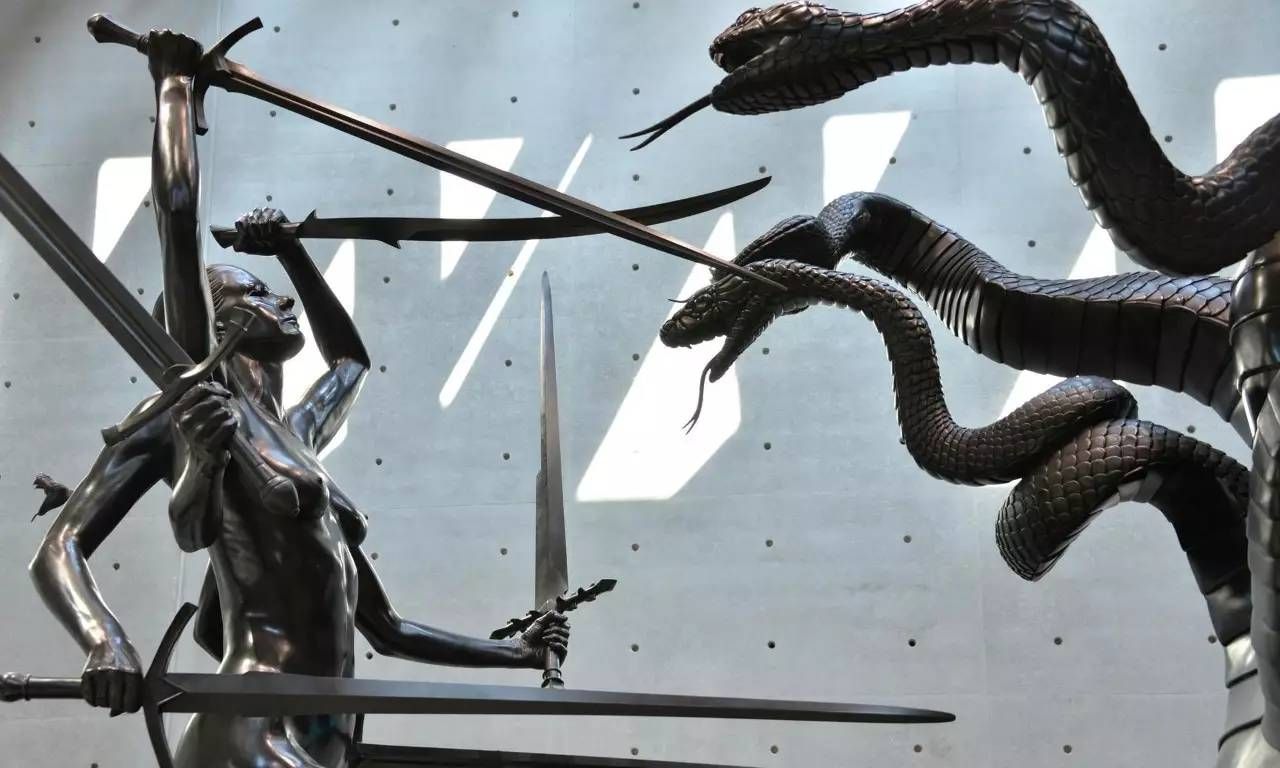
The story of hydra and kali sculpture
Where deities such as Ishtar were imaged in Damien Hirst’s Treasures from the Wreck of the Unbelievable through mixing the guises of contemporary celebrities, as was the worship of The Aten, the ancient Egyptian sun god, in being gazed up to by Rihanna, other works in the 2017 show juxtaposed figures from different mythologies in ways that speak to the merging of cultures in the ancient past and in the contemporary period. An incongruous and yet fitting pairing amongst the mythology-inspired sculptures was Hydra and Kali, pitting the Greco-Roman many-headed water serpent from Lerna against the Hindu goddess of time in a never-ending battle featuring cycles of death, renewal, and endless work, frozen before it can commence.
In the Greek myths, Herakles’s second of twelve labors was to defeat the Lernaean Hydra, which, Robert Graves explains (p. 430), ‘had its lair beneath a plane-tree at the sevenfold source of the River Amymone and haunted the unfathomable Lernaean swamp nearby. The Hydra had a prodigious dog-like body, and eight or nine snaky heads, one of the immortal; but some credit it with fifty, or one hundred, or even ten thousand heads.’ Graves also suggests that (p. 432) ‘Heracles’s destruction of the Hydra seems to record a historical event: the attempted suppression of the Lernaean fertility rites.’ If the Hydra represents fertility – and is sexed as female by scholars such as Jenny March (p. 39) – the destructive Kali as a bringer of death makes some sense as an adversary.
Like Ishtar, Kali is a complex goddess embodying many ambivalences. According to Elizabeth Harding (p. 41), ‘Kali comes from the word “kala,” or time. She is the power of time which devours all.’ In depictions and stories, Kali tends to have three eyes, four arms and a protruding tongue. The Treasures guidebook description for Hydra and Kali (p. 20) states that ‘the Hydra’s self-regenerating heads have led to the monster’s associative relationship with an endlessly repeating task.’ Who, then, would be more equipped to undertake such a task but a multi-armed, fearsome goddess who consumes all in time, especially as Herakles could not manage without the assistance of his nephew and companion, Iolaos (March p. 194)? A fitting and timeless match indeed.
How these mythical characters look in the Hydra and Kali series in Treasures (there were no fewer than four sculptures across the exhibition as well as drawings and photographs) requires attention, as do the interesting but potentially misdirecting observations in the guide text. In suggesting that the multiple arms and heads can ‘be read as an expression of movement’ (p. 20), the text relates the figures to modernist and cinematic techniques of conveying mobility in still images – techniques also loaded with time. However, on close inspection, all six of Kali’s swords are in different styles and shapes, and all seven of the Hydra’s heads (plus the tip of Kali’s plaited hair for good measure) are different breeds of snake from all over the world.i The number of arms and heads do appear to derive from cinematic depictions of both figures, specifically in Harryhausen creature creations. While the exhibition wasn’t favoured critically, pieces like Hydra and Kali find appreciation from delighted nerds (I use this term with affection and solidarity) who recognise the fantasy elements in such combinations and finally feel ‘seen’ by the art world, even if they couldn’t access the show in person.
Further ways that the Hirst Kali departs from established depictions of her (a loaded discussion in itself) in addition to the extra arms and only holding swords, is that her slightly Gorgon-esque hair is bound as she goes into battle, she is alone and she has no adornments. I am mainly studying the ‘clean’ and ‘complete’ large version that the exhibition’s narrative would have us assume is a replica of the ‘found’, ‘damaged’ coral-covered version. It is easier to see what is going on with the fantasy-derived swords, the stance, the snake heads, and so on, plus the darkness of the untainted bronze befits Kali’s darkness and nakedness.
Harding describes Kali thus (p. 41): ‘A power that destroys should be depicted in terms of awe-inspiring terror. Kali is found in the cremation ground amid dead bodies. She is standing in a challenging posture on the prostrate body of her husband Shiva. Kali cannot exist without him, and Shiva cannot reveal himself without her. She is the manifestation of Shiva’s power, energy. […] While Shiva’s complexion is pure white, Kali is the color of the darkest night – a deep bluish black. As the limitless Void, Kali has swallowed up everything without a trace. Hence she is black. […] Her luxurious hair is dishevelled and, thereby, symbolizes Kali’s boundless freedom. Another interpretation says that each hair is a jiva (individual soul), and all souls have their roots in Kali.’
Kali is usually depicted with her left foot forward, but the Treasures versions invert that. Harding explains that (pp. 37–8) ‘the Hindu distinguishes a benign (dakshina) from a fearful (smashan) Kali by the position of her feet. If Kali steps out with her right foot and holds the sword in her left hand, she is a Dakshina Kali. And if she steps out with her left foot and holds the sword in her right hand, she is the terrible form of the Mother, the Smashan Kali or the cremation ground.’ In Hindu narratives, Kali releases her hair before battle. The Treasures Kali, although free in her nakedness and benign in her stance, her six arms each wielding a sword, her lack of a third eye for wisdom, her closed mouth and her unbound hair (all as in The Golden Voyage of Sinbad [dir. Gordon Hesler, 1973]) indicate she is not acting autonomously, but fighting under orders, just as Herakles was for the labours imposed on him by the king of the Argolid, Eurystheus (March p. 190). With relevance, in Homer’s Odyssey the shade of Herakles tells Odysseus that he ‘was a son of Zeus […] but infinite was my suffering; for I was slave to a far inferior man’ (March p. 191 quoting from lines 620–23 of book 11 of the Odyssey). Here, Kali, a powerful goddess, keeper of time and bringer of life and destructive death, is rendered as a fantasy heroine in a battle to the death in a game-like fashion of choosing your player.
Hydra and Kali’s positions do resemble a 3D face-off a la two-player battle games such as Mortal Kombat or Street Fighter whose now customizable characters have their own mythologies and skill-sets and whose battles can be re-played repeatedly with different results. This is reflected in the different versions of Hydra and Kali in the exhibition which show them in slightly different positions and colours. For example, the 0.935m-tall silver Hydra and Kali in room 4 of Palazzo Grassi sees both figures in a different slice of time in their impending duel than in the 5.265m-tall bronze in Punta della Dogana room 11. The small version sees Kali’s right leg raised as if taking the step forward completed in the large version. The silver also contrasts with the bronze, as does Kali’s yellow-orange painted hair, giving her quite a Celtic look and a tentative link to a whole other set of mythologies in which mystical women battling sea-monsters would not be out of place.
While the gaming link and the mythology mash-up have evolved from a history of the western appropriation and ‘civilising’ of eastern practices and elements of cultures, such game and fantasy characters can be as meaningful today for gamers and fans as for followers of deities from a polytheistic pantheon, like Kali. As gods are chosen for worship, avatars are chosen for escape and self-empowerment.
PACKING WAY:
A. Strong wooden cases-Special for life-size sculptures, small items
B.Iron box- Special for large sculptures
C.Covered non-fumigation box- Special for small statues, urgent situation by air, or door to door packages.
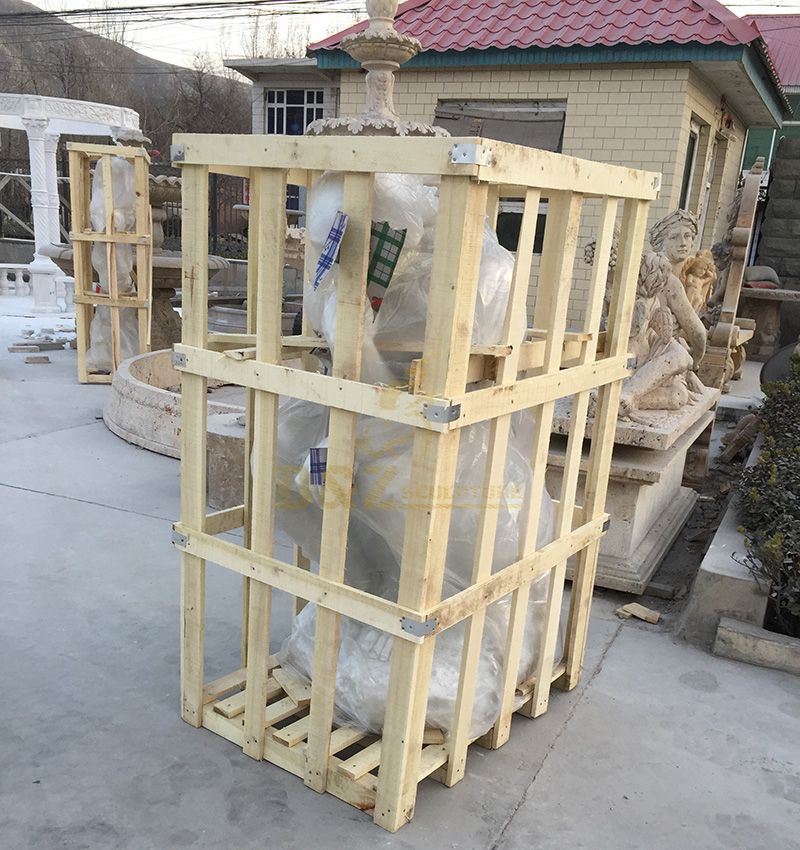
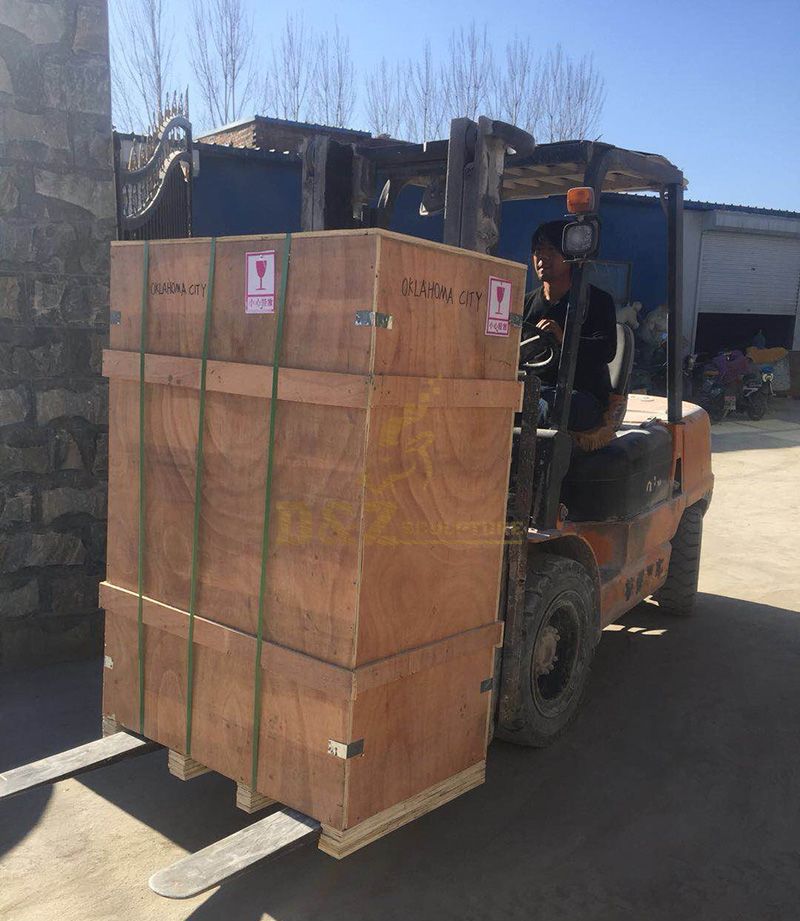
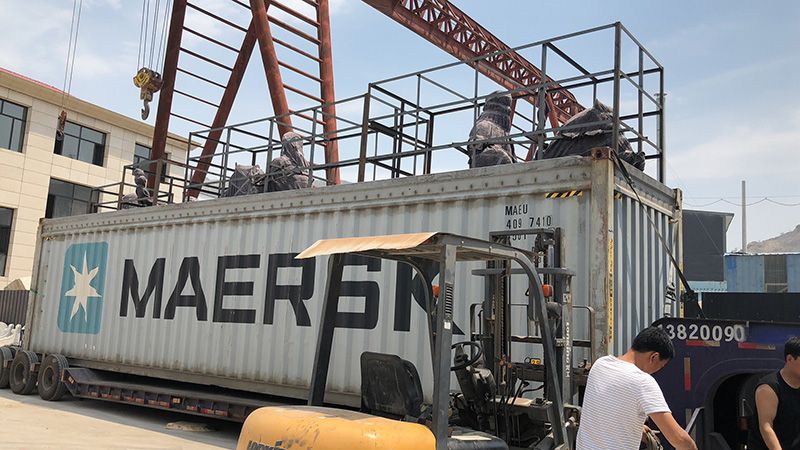
1. The world-leading brand for sculptures designs, create and manufacturer
2.Free 3D/ CAD drawing service
3.Manufacturer directly competitive price
4.Art level details and artwork
5.Quality guarantee lifetime each sculpture
6.Strong wooden cases
7.Door to door delivery
8.Professional after-sale services
9. The professional engineer team can guide to install in your country site.

